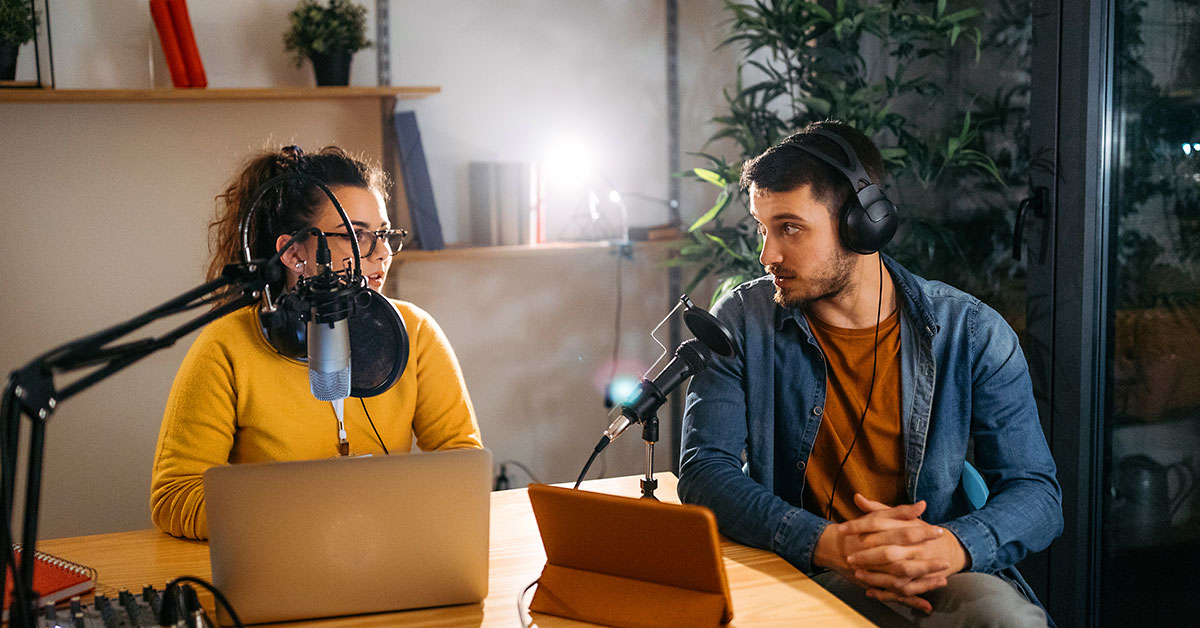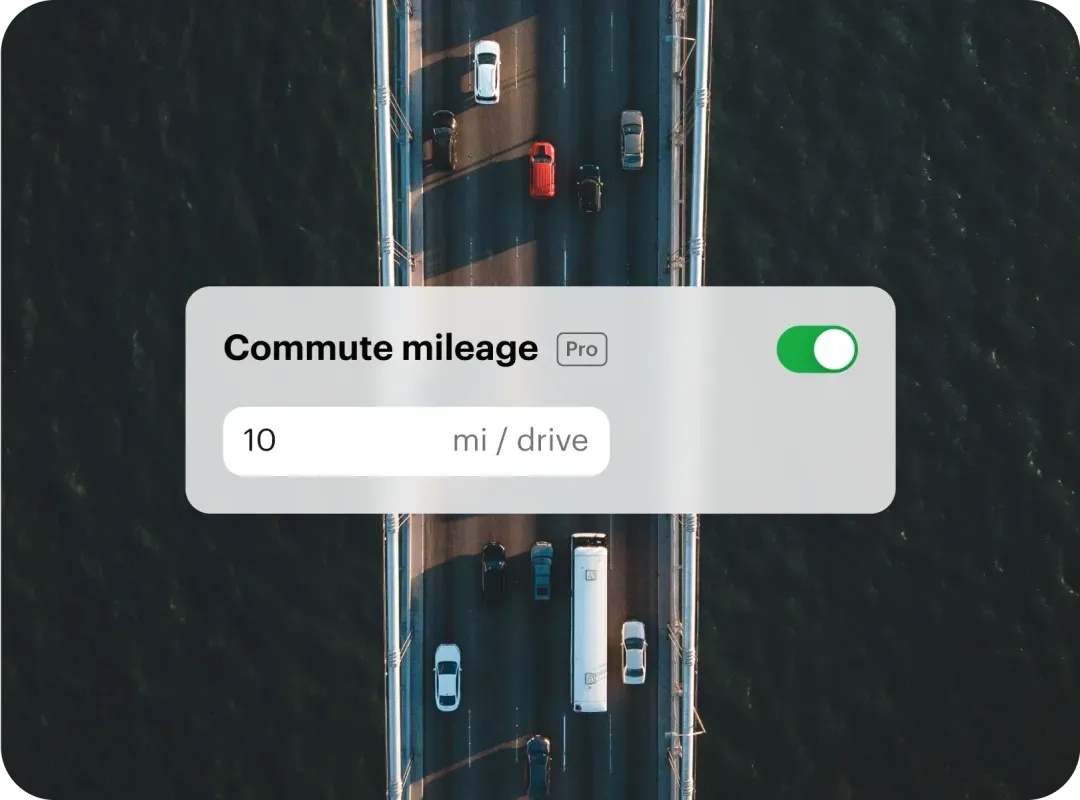Want your content to reach a whole new audience? Podcasts are where it’s at.
In 2019, 64 percent of consumers know what a podcast is — up from 22 percent in 2006. And, more to the point, 38 percent of podcast listeners have bought a product or service mentioned on a podcast.
Here’s how you can start your own podcast and get a slice of the action.
What is a podcast?
Let’s start with the basics. A podcast is a recorded show — usually audio only — spread over several episodes. Listeners download the file or, increasingly, stream episodes on Apple Podcasts, Spotify or another platform.
Podcasting was born in 2004 when developer David Winer created a program that could download internet radio broadcasts. Today, there are over 750,000 podcasts spanning 30 million episodes, with topics ranging from the very mainstream to the nichest of the niche.
How to start a podcast: The planning stages
The typical podcast spans multiple episodes and lasts 43 minutes per episode. That’s a big commitment. So you need to plan ahead if you want to be successful.
Here are four steps you should take before you record a single second:
1. Pick your topic
If you’re creating a business podcast, the topic will be something related to your industry. You should pick a topic:
- You know well
- Can speak authoritatively about
- Can commit to discussing over a series of episodes
- Is interesting and relevant to your audience
2. Decide on the format
Some of the most popular podcast formats are:
- One-on-one interviews. Each guest will bring their own perspective. That said, the success of the episode will hinge on your interviewing skills
- Panel discussions. As in one-on-one interviews, the guests all get to share their insights. The flipside is that it’s easier to go off the rails if you’re not careful
- Solo commentary, or solo-casts. Think you have enough to say about a topic to carry a full episode by yourself? Have an unpopular opinion? Here’s your soapbox
- Storytelling podcasts. Everyone loves a good story, so this format can be highly addictive. Stories could span a single episode, a season or multiple seasons
Of course, you don’t have to stick to a single format. You could mix and match. Just know that audiences like consistency. Following up a big, dramatic story with a panel discussion may confuse them.
3. Map out your episodes
Trevor Long, the host of the Two Blokes Talking Tech podcast, says outlining each episode is key:
“…this doesn’t have to mean a minute-by-minute plan, it just means have a plan. What’s first, what’s next, how do you get from one thing to the next, and if multiple people are involved, who’s doing what?”
Having a good idea of what’s going to happen before you press record means fewer false starts and less editing. As The Brad Gilmore Show host Brad Gilmore puts it: “If you don’t plan at all you will find yourself stumbling and bumbling around trying to go from subject to subject.”
4. Do your research
It goes without saying. But you can’t host an insightful podcast unless you thoroughly know your stuff.
You should have chosen a topic you’re knowledgeable about to begin with. But, it doesn’t hurt to do some background reading. And, if you’re interviewing, you should thoroughly research your guest.
What equipment do you need to start a podcast?
The beauty of podcasting is that you can start with just your laptop or phone. Although, investing in some good quality equipment will make your podcast more professional.
Here’s a roundup of the basic equipment you should look into.
1. A good quality microphone
The microphone is the single most important piece of equipment when recording a podcast. Your laptop or phone’s built-in mic will get the job done. But a good quality external microphone will improve your podcast’s production values by leaps and bounds.
The best microphones for studio recording are condenser microphones. This is because they’re more sensitive so they capture sound more accurately.
You’ll also need to think about how you’ll connect the mic. More expensive professional mics plug into a mixer through a connection called XLR. But, for podcasting, a mic that plugs into your laptop through USB should be more than enough.
Four good and affordable mics for podcasting are:
2. Digital audio workstation (DAW)
You’ll need this to record audio, edit it and export your podcast as an mp3 or .wav file.
Your options include:
- GarageBand. This is free with all Macbooks
- Audacity. Free for both PC and Mac
- Adobe Audition. Want more bells and whistles? Audition has best-in-class recording, editing, mixing and audio restoration features. All for $20.99 a month
- ProTools. This is the gold standard in audio recording. It’s used in most professional recording studios. There’s a free plan and paid plans starting at $29.99 a month
3. Call recording software
Planning to conduct interviews? Unless you can do it in person, you’ll need call recording software.
These software programs are both great alternatives and free to use:
4. Optional equipment
These aren’t essential but can greatly improve your podcast:
- Pop filter. Your Ps, Bs and other plosives can cause unpleasant popping sounds. Placing a pop filter in front of your mic cuts them out and makes the audio easier to edit
- Headphones. These are especially important if you’re interviewing guests remotely. If you hear your guests through your speakers, the sound will interact with your mic and create echo and feedback loops
- Transcription software such as Descript or Transcriber. This converts audio to text, so you can add subtitles to your podcast. Adding subtitles will help you reach a wider audience, for two reasons:
- The hearing-impaired will be able to follow along
- Most people on social media watch videos with the audio turned off
Where do you host a podcast?
Hosting is where you upload your podcast so your audience can listen to it. You might think your website is the obvious choice. But this isn’t usually advisable because you probably don’t have enough bandwidth for smooth streaming and downloading.
Instead, you should use a podcast hosting platform.
These platforms are designed to handle the bandwidth demands of audio files.
More to the point, you can only get your podcast on Apple Podcasts — the most popular place to listen to podcasts — through a host.
Here are four podcast hosting platforms worth looking into:
- PodBean
PodBean gives you five hours of storage and 100 gigabytes of monthly bandwidth for free. Alongside publishing on Apple Podcasts, your listeners can also listen to episodes on the PodBean app.
- Spotify
Spotify for Podcasters is still in beta, but it’s already the second most popular place for podcasts after Apple Podcasts. You can submit to Spotify for free by creating an account. The catch is that, unlike other hosts, it doesn’t create an RSS feed for you. You’ll have to do this separately before you upload it.
- SoundCloud
Originally a place where musicians shared clips, demos and even full songs, SoundCloud is becoming increasingly popular as a podcast hosting platform. You get three hours of upload time for free. But at $12 a month, an unlimited plan is very affordable.
- Blubrry
Blubrry has been in the podcasting game since the very beginning. They have a plugin for WordPress, so your listeners can access your podcast from your own website. And they also make it easy to publish on other platforms, including Apple Podcasts. Accounts start at $20 a month.

















